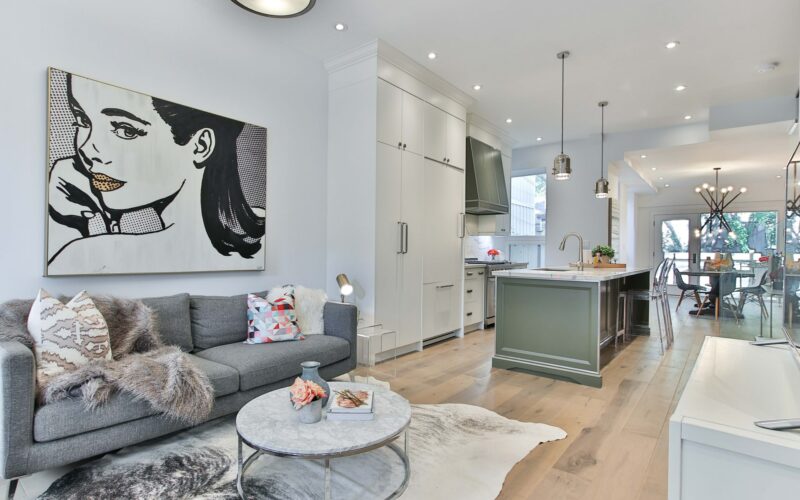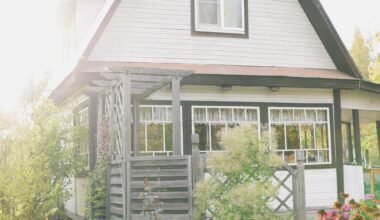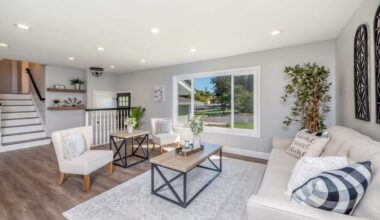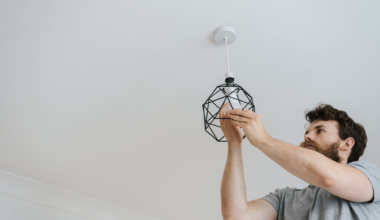Did you know that homes, when staged, sold for a greater amount over 30% of the time? Even better, over 50% of staged homes reduced their time on the market. With a modest investment and a little bit of elbow grease, you could turn your home into an offer letter (and hopefully some funds).
So, how do you properly stage your home for selling?
In this article, you’ll learn the rights and wrongs of staging a house. You’ll also take away tips on how to do it efficiently, affordably, and most importantly—with the intent to sell.
Prepping the Exterior
First impressions are lasting, so when a buyer pulls up and sees dead leaves, unkempt shrubbery, and an oil slick in the driveway, it could permanently change their view. Curb appeal sets the tone.
If time is on your side, consider lining the driveway with solar lights or building a rock wall to create texture. Homeowners who already have these features can add fresh rocks, replace worn lights, or diversify their garden beds with contrasting sizes and shapes.
Before the showing, circle the property removing any unsightly garbage, leaves, or dead plants; replace, and trim anything green that needs love. Mow the grass and whack the weeds. If it’s lacking in design or greenery, consider adding a pop of color on the doorstep using potted flowers. Be mindful to remove any seasonal additions such as wreaths, pumpkins, and signage. When you keep the space neutral, buyers can envision their own decorations on your front porch.
Finally, pressure wash the driveway, fences, and other paved areas. The removal of years worth of dirt and grime will make a home sparkle. Clean the front door and refresh the paint if necessary, leaving no stone unturned.
The end product is a beautiful exterior that conveys confidence, transparency, and tranquility.
Mastering the Living Room
The living room is where American families spend the majority of their time. So how can you stage it to sell? Realtors® will tell you how often they hear as buyers enter a home, “Well, at least we know the A/C works.” Setting the temperature ahead of time to appropriate levels will help them feel comfortable. Open the blinds up and let natural light pour into the living space. Complement the lighting with natural scents, such as lemon or orange zest.
Once you’ve mastered the temperature, lighting, and scent, focus on the buyer’s visual stimulus. Remove personal photographs and replace them with landscapes, minimalistic art, or even pictures of the house in different seasons. When it comes to art, think “hotel lobby.” The key is to keep a neutral design—free from personality.
Create quaint areas where the buyer can envision themselves curling up with a nice book. Pillows and blankets should look cozy, casual, but not sloppy. If necessary, remove furniture and use an open floor plan. You’re showing the buyer how there’s ample space for a couch, entertainment center, coffee table, etc.
Bathroom Breakdown
Walking into someone else’s bathroom is already a nerve-racking experience. The lack of cleanliness could make it even worse. Dirty laundry, hair, trash, or anything unsightly could send buyers out the front door in a hurry.
When staging a home to sell, take extra care in the bathroom. Scrub the tub, toilets, and sink. Organize and wipe down storage areas such as shelves and under the faucet. Only use soap in presentable containers and keep the personal care products to a minimum. If your buyer doesn’t feel like the bathroom is clean enough to freshen up in, your house could lose points.
Kitchen Turnaround
Your kitchen is the heart of a home, where space, storage, cleanliness, and productivity collide. As a homeowner, you should optimize your kitchen to highlight these categories.
To create the best depiction of space, begin by decluttering—layer by layer. Start with the countertops, move into the pantry, and then onto the drawers. Pull appliances, books, and trinkets off the counter. Stock, but don’t overfill the pantry. The savvy seller will strike a balance between functionality and capacity. The buyer needs to see there’s plenty of room for additional food storage. People will open your drawers and cabinets, so remove anything unsightly. Once again, keep them functional but with room to grow.
Cleanliness is paramount in the kitchen. You want potential buyers to imagine themselves preparing a meal without any quips. This is impossible when the dishwasher is full of dirty dishes, the oven grates are slimy, and the microwave has last night’s leftovers splattered on the sides. Take care to clean out the food in the fridge and wipe down the shelves using unscented or citrus fragrances. These are all everyday occurrences, but the allure of a kitchen that’s essentially a blank canvas is powerful for prospective buyers.
Finish up in your kitchen by adding tasteful plants, such as fresh herbs, on the windowsill or counter. Herbs will create life and visual contrast.
Bedroom Makeover
The master bedroom should give the allure of luxury while feeling unmistakably comfortable. When staging this area, include fresh white linens, oversized comforters, and neutral artwork. Clothing should be folded carefully and hung in the closet when applicable.
Avoid any dirty clothes and remove overstock to promote capacity. Vacuum carpets and ensure nothing is hiding under the bed. Finally, open the blinds to showcase the natural light.
The Bottom Line
Staging a home is a necessary process that adds value and helps showcase your house’s natural beauty. When a homeowner decide whether to go the extra mile, they should consider the market, what their budget is, and how fast they need to sell their home. By following these tips, you’ll not only put your best house forward, but you’ll display transparency and attention to detail through your actions.










